2015 Completion of Leona Heights Sulfur Mine Cleanup
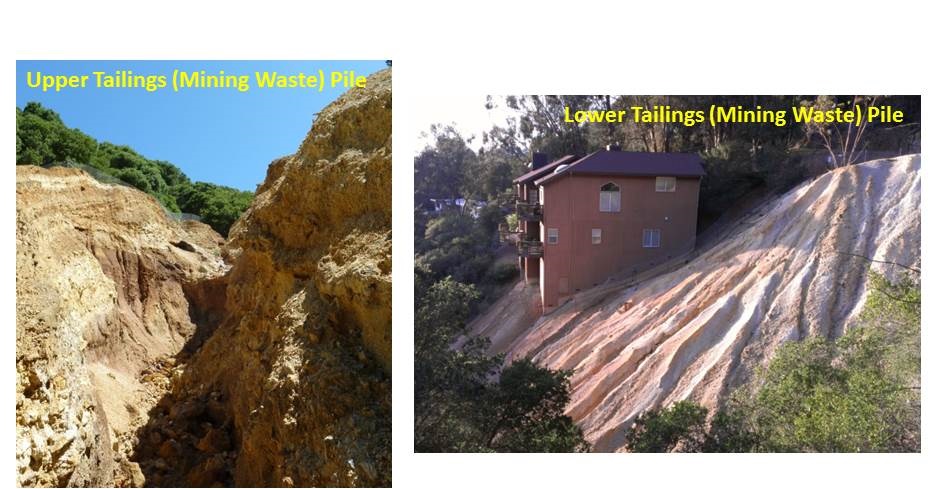

In the 1920s, three large piles of mining waste were abandoned in the Oakland Hills when pyrite mining in a small, steep canyon ceased. Sulfur in the mining waste produced sulfuric acid on contact with water from rain or from Leona Creek, which runs through the site. This turned the creek acidic and orange, leaching metals like lead, copper and mercury into creek water, and causing the worst water quality condition ever identified in our Region. While humans were not affected because the water is not used in the vicinity for drinking water, Leona Creek and the site itself were toxic and not functional for wildlife.
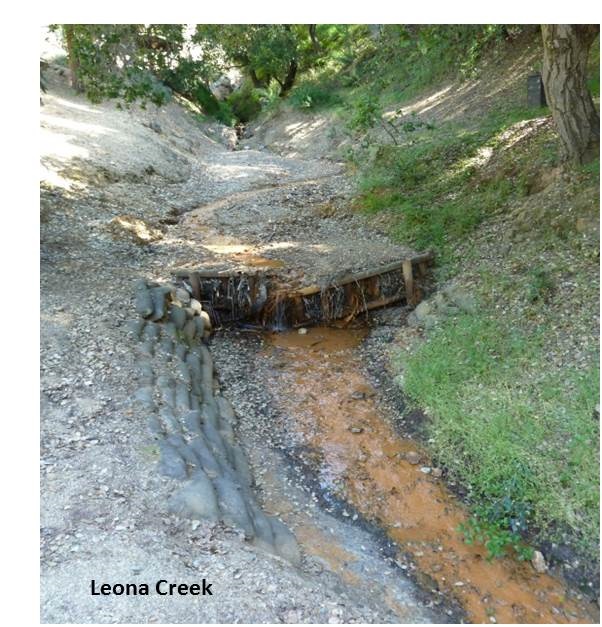
After a long history of noncompliance, our Board adopted a Cleanup and Abatement Order amendment and Time Schedule Order in 2013 that prescribed severe penalties to force action from the responsible parties, consisting of both the current and former landowners (mining entities no longer exist). The responsible parties worked with region 2 staff, and in 2014 designs were approved by staff and by permitting agencies responsible for ensuring the project did not impact the environment or neighbors (per the California Environmental Quality Act).
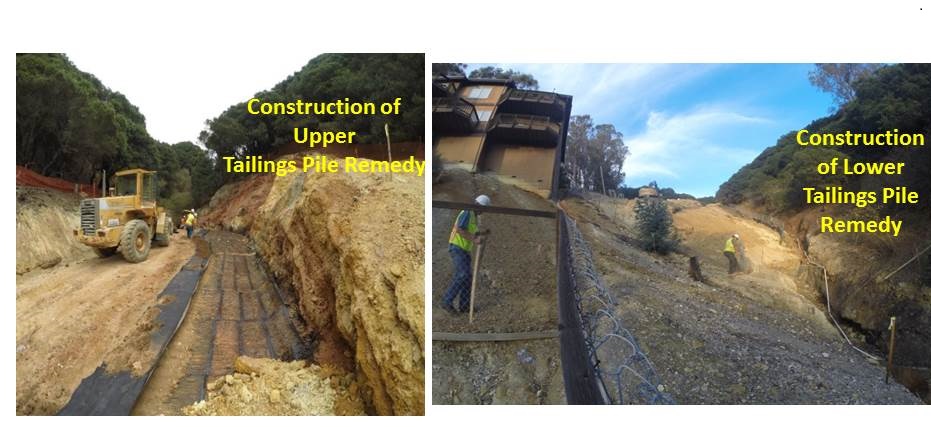
Design and construction was complicated by the steep terrain and difficult access. Trucking waste off-site was not preferred due to hazards associated with transporting the waste and the massive carbon footprint that would result. Instead, to remedy the problem, mining waste was isolated on site from water by engineering stable slopes of waste on site, which were covered with an impermeable membrane to preclude contact with water, followed by soil and vegetation. Leona Creek was then restored.
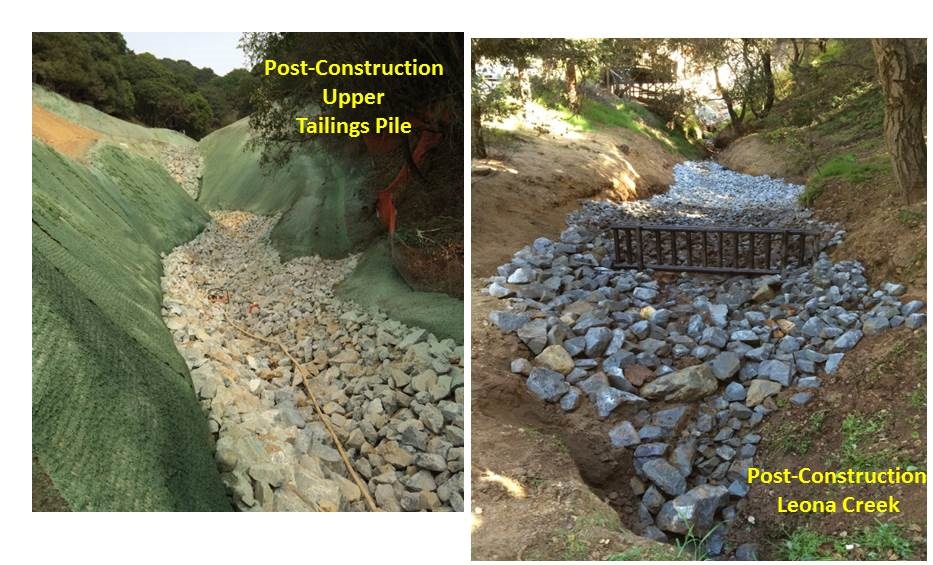
The project is in the verification monitoring phase, where slope and creek stability, as well as water quality, will be evaluated to ensure the cleanup approach is effective.
2017 Update
In December of 2015, sustained heavy rainfall contributed to sliding of the topsoil layer (the uppermost layer intended to support vegetation) on two of the constructed slopes. Mining waste was not exposed during the incident, however topsoil discharged to Leona Creek. Water Board staff responded by issuing a Notice of Violation to the responsible parties and requiring repairs. In the summer of 2016, the topsoil layer was repaired using an improved design. The recent photos below demonstrate that vegetation is becoming established and the slopes remain stable, despite the intense rain events we have experienced this wet season.
Initial monitoring results indicate that the quality of water in Leona Creek has significantly improved in response to remediation. Concentrations of metals in Leona Creek have decreased by orders of magnitude and the pH of the creek during rain events (historically periods of maximum acid production due to exposed sulfurous waste) has increased from as low as 1.5 to between 3.8 and 5.1. We expect that Leona Creek water quality will continue to improve as the source of water to the mining waste has been reduced or eliminated. The creek bed is intermittently orange in color due to iron-oxidation and precipitation, which was anticipated due to the occurrence of 3 low pH (acidic) seeps into Leona Creek on-site. The quality of water emitted from the single seep determined to be impacted by mining activities is improving over time, however the other seeps appear to be natural in origin and therefore not subject to our cleanup requirements.
We will continue to monitor the site for stability and water quality trends, but are pleased with initial results, especially that arsenic, lead and mercury concentrations measured recently were below applicable (freshwater ecotoxicity) standards and the evidence the site is more functional habitat/corridor.
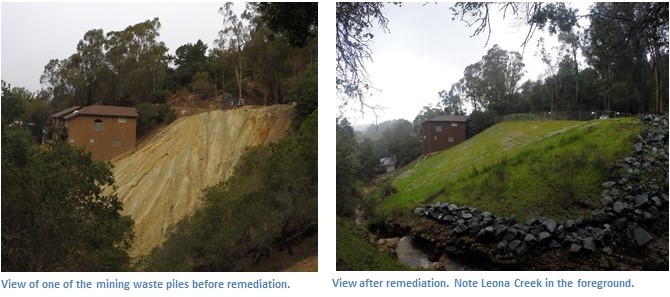
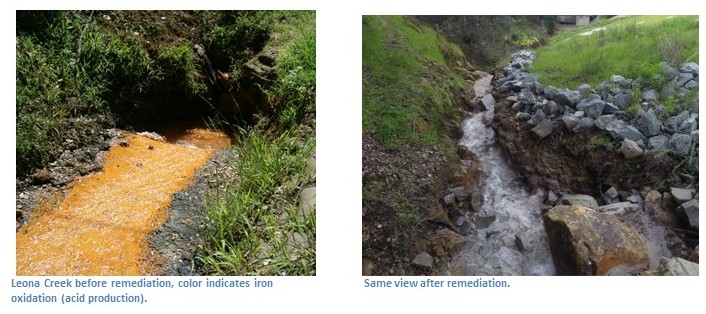
If you have questions or concerns please contact:
Lindsay Whalin, MS, PG
Lindsay Whalin@waterboards.ca.gov
(510) 622-2363


